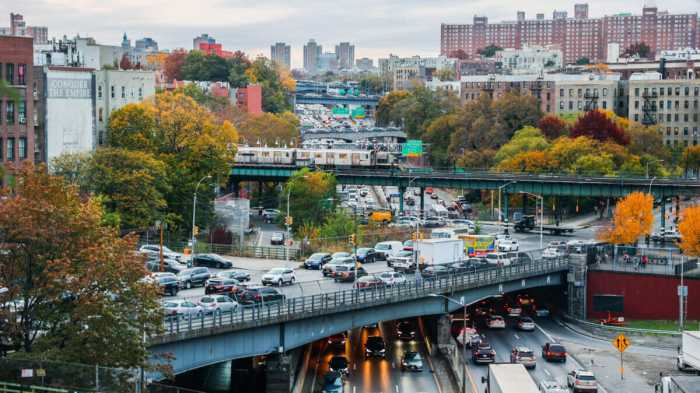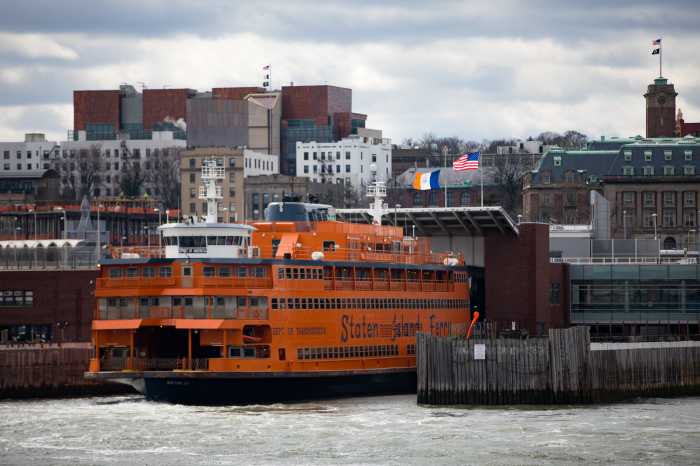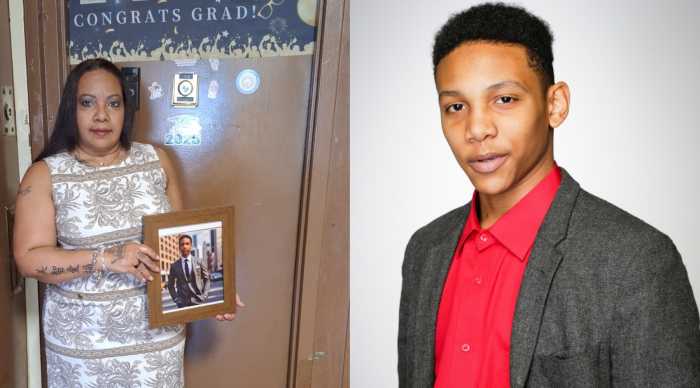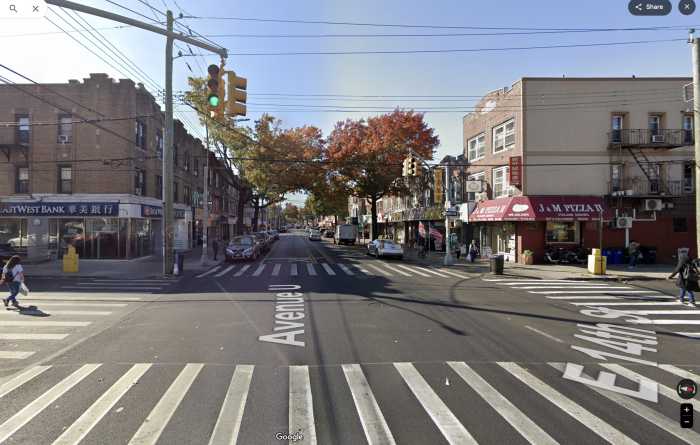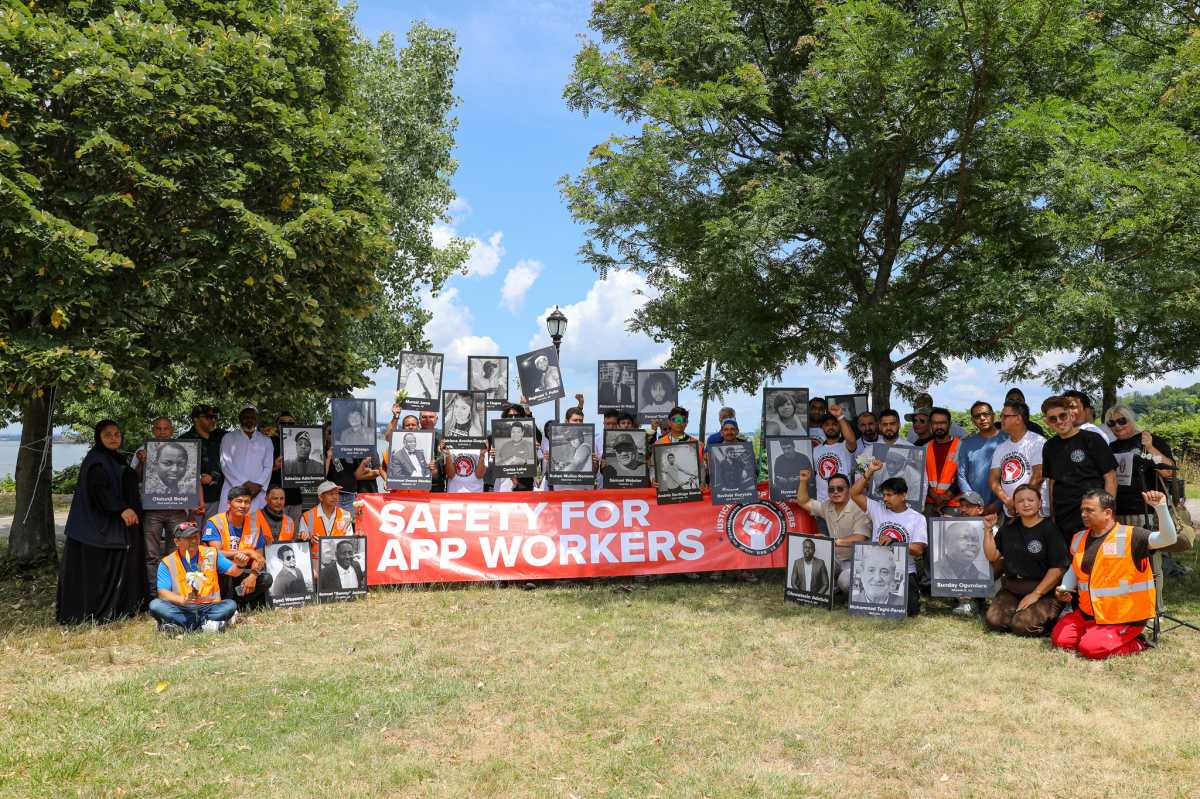
Elected officials encountered an out-of-order subway elevator immediately after pledging to take stair-free subway rides this week — a serendipitous affirmation of the need for accessibility improvements by the MTA.
Six politicians joined activists from the TransitCenter outside MTA headquarters Monday to call for the agency to draft a long-term plan to add elevators to stations and improve maintenance of those currently in use.
“The MTA is one of the least-accessible subway systems in the country, with only 23 percent of stations accessible; and the elevators are notoriously unreliable,” said Chris Pangilinan, program director at TransitCenter and wheelchair user. “I’ve been here for three years, and I’ve encountered over 230 elevator outages, myself, where I’ve had to be carried up the stairs or cancel a whole trip.”
Only 117 out of 472 MTA subway stations are wheelchair-accessible, and advocates believe the agency is at a pivotal point for increasing that number. The MTA is nearing the completion of its goal to have 100 “key” stations meet Americans with Disabilities Act standards by 2020 — the result of a 1994 lawsuit settlement over the system’s lack of wheelchair access. With just 11 stations left on that key stations list, advocates want the agency to outline a similar, but more ambitious target for the coming years.
Without providing details about future spending plans, Shams Tarek, an MTA spokesman, said accessibility is a “key priority” for the agency. He added that 25 more stations will become accessible through already-approved funding and that the 117 accessible stations serve 44 percent of subway ridership.
“Increasing accessibility is a key priority for the MTA and is being addressed on multiple levels,” said Tarek in a statement. “We’re spending more than $1 billion in our current capital plan to build new elevators and escalators and replace older ones and our entire bus fleet is ADA-accessible and provides reliable service that can only improve if the city aggressively moves to begin reducing congestion on its streets.”
State Assembly members Jeffrey Dinowitz, Robert Carroll, Linda Rosenthal, Helene Weinstein, Pamela Harris and City Councilwoman Helen Rosenthal were in attendance Monday to mark the start of their stair-free week, which will include five stair-free rides from each participant.
Councilman Brad Lander and Assemblywoman Jo Anne Simone missed the rally, but TransitCenter said they too will be participating. Straphangers can track their travels, which will be documented on Twitter, with “#elevateMTAweek” and “#accessdenied.”
Dinowitz and Rosenthal hit the MTA over failing to address accessibility during its station renovations program, a Cuomo administration project to revamp and redesign 30 subway stations. Dinowitz called the program “ludicrous” for overlooking accessibility. Rosenthal said the MTA needed to figure out how to install elevators more cheaply, arguing MTA construction costs are much higher than those of other transit agencies.
For the inaugural trip following the rally, the pols traveled the Lexington Avenue line from Bowling Green to Grand Central. The ride started smoothly, though Dinowitz needed MTA worker assistance to refill his MetroCard at a vending machine. The assemblyman, outgoing chairman of the committee that oversees the MTA, insisted through Twitter that he needed help because he usually refills his card through a MTA booth worker.
“I prefer the booth and talking to human beings,” he tweeted. “Call me old school, I guess!”
When the group attempted to leave through Grand Central, though, the elevator was out-of-order. Some of the pols left the platform via stairs to continue their days, while wheelchair users had to chart a different ride. Dustin Jones and Monica Bartley had to get back on a 4 or 5 train to the next accessible station — all the way in Harlem at 125th Street.
“This is every day for me. I ran into two broken elevators yesterday,” said Jones, a wheelchair user and disability rights activist.
Jones, president and founder of United for Equal Access New York, said he has used a wheelchair to navigate the city for six years, becoming more involved in advocacy shortly after.
“For two years I was trying to live a normal life and be productive but then I realized that this would be every day for me,” Jones said. “This can add an hour and change to my commute. They tell you to plan ahead, but planning doesn’t prepare you for this.”



